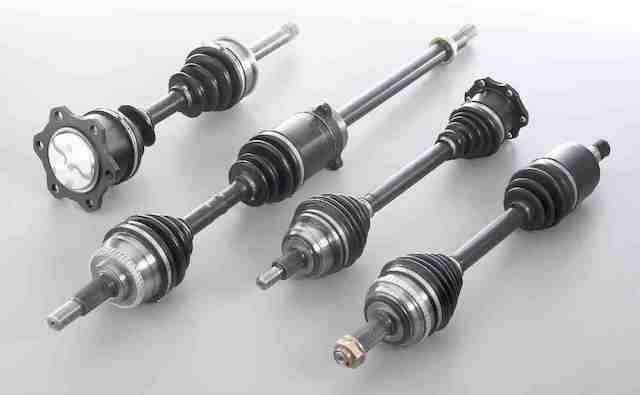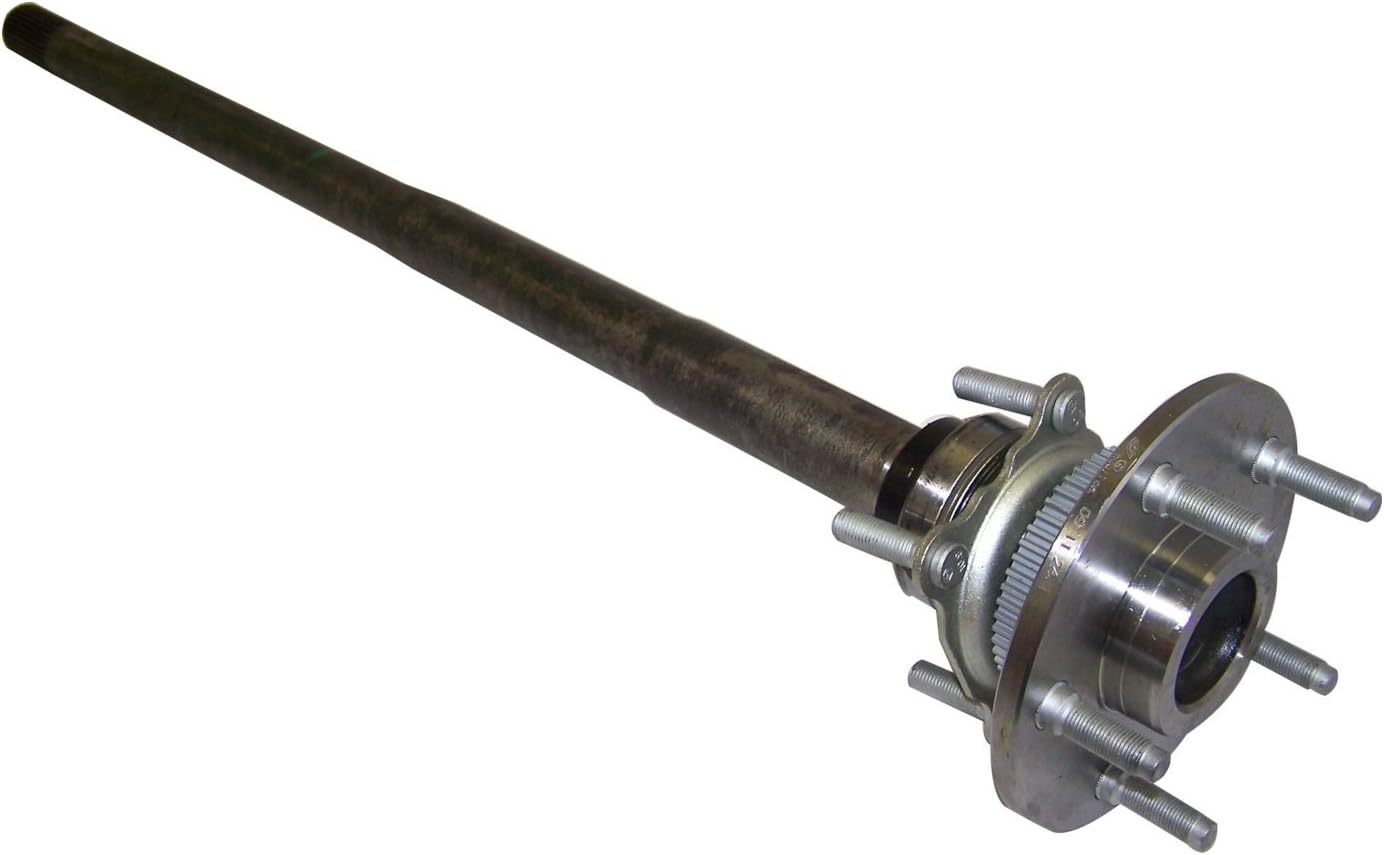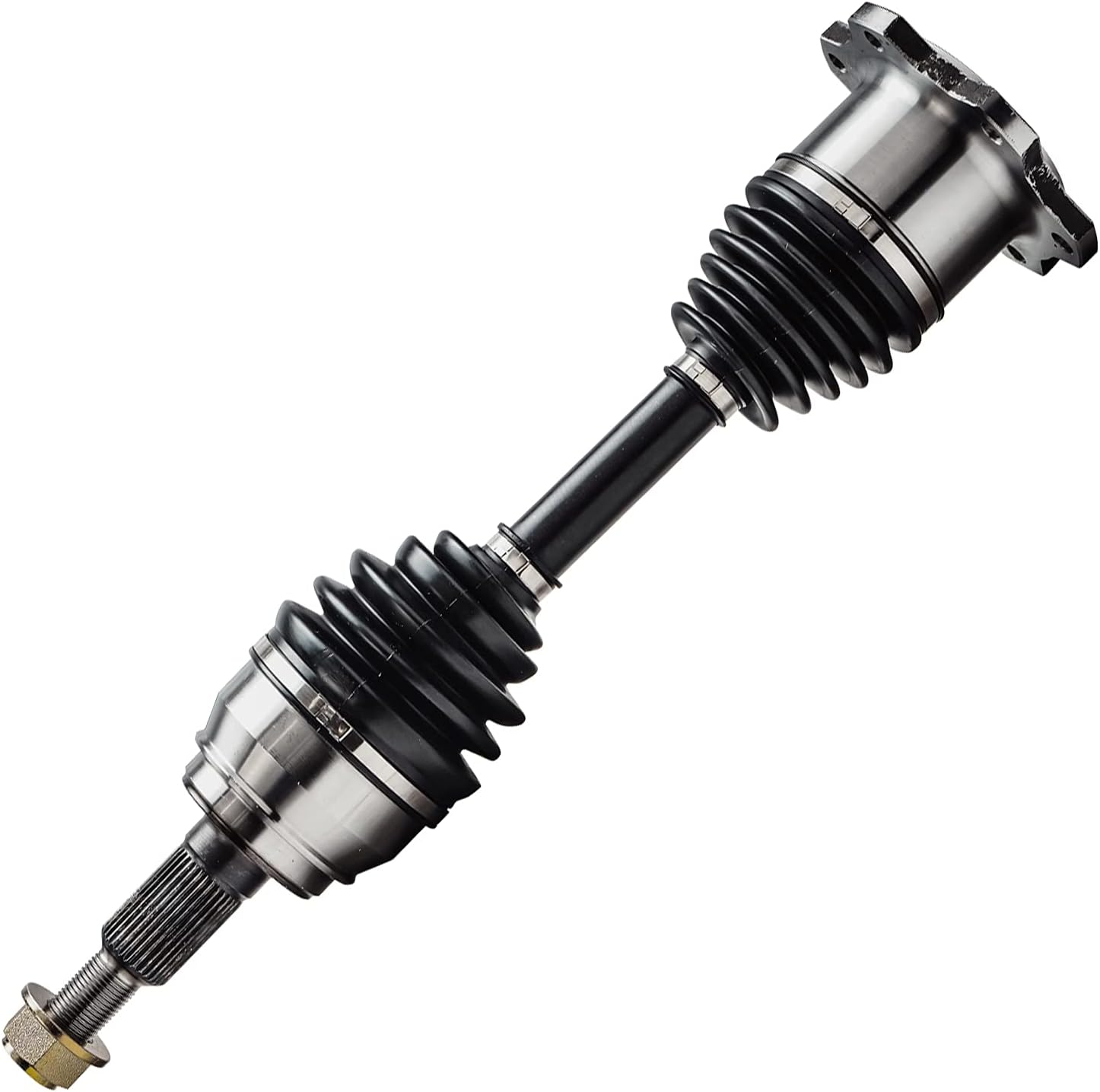Product Description
Popular English Type Axle with Good Price
Introduction of enterprise:
HangZhou Jinlibo Trade Co., Ltd. Has introduced sophisticated equipment from overseas to develop and manufacture semi-trailer axles and related parts. Holding ISO9001: 2000 certification for our management system, we faithfully follow the stipulations of this standard so as to guarantee high product quality.
Following the principle of ” Customers first”, our products are guaranteed to be dependable quality and be offered with full after-sales service. Located in HangZhou City, ZheJiang Province, close to the 1 of China’s main deepwater ports, we can thereby expedite the delivery of all orders. Welcoming interested companies around the world to cooperate with us, we are looking forward to receiving your detailed inquiries.
Scope of our business
1. Axles (German type axle, English type axle, American type axle, Spoke axle, ZM axle, Agriculture axle, Half axle, Axle without brake)
2. Suspension (Bogie suspension, One point suspension, Rigid suspension, Spoke suspension, Machinery suspension)
3. Landing gear
4. Fifth wheel (2” 3.5”)
5. King pin (2” 3.5”)
6. Semi trailer
7. Other axles and related parts (Low bed axle, hub, rims, spring, drum…)
Characteristics:
1. Special heat-treat, low-alloy steel axle beam, it has the vitues of good synthetic performance, strong load ability and lower self weight.
2. High quality alloy solid inserted spindle, through wholy heat treatment, provide superior fatigue capability.
3. High performance premium non-asbestos brake linings, estend serbice life.
4. Easy for ABS installation.
5. Camshaft, matching with special seals, can ensure no entry of the grease into the brake drum, more safety.
6. New tight fit hub cap habe O rings, high property for sealing.
7. Grease lubricant is supplied by Mobil that lengthens the time of free maintenance.
8. Full range of stud fixing such as ISO, BSF and JAP, it can meet the requirements of various wheel rims.
WE CAN PRODUCE AS YOUR REQUESTS!
| ENGLISH TYPE AXLE | |||||||||||
| AXLE TYPE | BRAKE SIZE | WHEEL FIXING | NO.xSIZE OF WHEEL STUD | WHEE.REG.DIA(DIM B) | DIM.D | BEARING | MIN WHEEL | BEAM SIZE | AXLE CAPCITY | SPRING SET INSTALLATIONS | WEIGHT |
| RNY1218J | 420×180 | JAP | 8xM20x285 | 221 | 718 | 33213 218248 | 20″ | ?150 | 13T | ≤450 | 350KG |
| RNY1222J | 420×220 | JAP | 8xM20x285 | 221 | 738 | 33213 218248 | 20″ | ?150 | 13T | ≤450 | 370KG |
| RNY1218I | 420×180 | ISO | 10xM22x335 | 281 | 710 | 33213 218248 | 20″ | ?150 | 13T | ≤450 | 350KG |
| RNY1222I | 420×220 | ISO | 10xM22x335 | 281 | 730 | 33213 218248 | 20″ | ?150 | 13T | ≤450 | 380KG |
| RNY118B | 420×180 | BSF | 10×7/8″x335 | 281 | 701 | 33213 218248 | 20″ | ?150 | 13T | ≤450 | 350KG |
| RNY1220I | 420×200 | ISO | 10xM22x335 | 281 | 715 | 33213 218248 | 20″ | ?150 | 13T | ≤450 | 370KG |
| RNY1622B | 420×220 | BSF | 10×7/8″x335 | 281 | 721 | 218248 220149 | 20″ | ?150 | 16T | ≤450 | 420KG |
| RNY1622I | 420×220 | ISO | 10xM22x335 | 281 | 721 | 218248 220149 | 20″ | ?150 | 16T | ≤450 | 420KG |
| RNY1822I | 420×220 | ISO | 10xM22x335 | 281 | 721 | 218248 220149 | 20″ | ?150 | 18T | ≤450 | 450KG |
| RNY12018I | 420×180 | ISO | 10xM22x335 | 281 | 710 | 33213 218248 | 20″ | ø127×18 | 12T | ≤450 | 350KG |
| RNY12018J | 420×180 | JAP | 8xM20x285 | 221 | 718 | 33213 218248 | 20″ | ø127×18 | 12T | ≤450 | 340KG |
| RNY12018B | 420×180 | BSF | 10×7/8″x335 | 281 | 701 | 33213 218248 | 20″ | ø127×18 | 12T | ≤450 | 350KG |
| RNY12571I | 420×220 | ISO | 10xM22x335 | 281 | 730 | 33213 218248 | 20″ | ø127×18 | 13T | ≤450 | 370KG |
| RNY16571I | 420×220 | ISO | 10xM22x335 | 281 | 721 | 218248 220149 | 20″ | ø127×18 | 16T | ≤450 | 430KG |
| RNY17571I | 420×220 | ISO | 10xM22x335 | 281 | 721 | 218248 220149 | 20″ | ø127×18 | 17.5T | ≤450 | 430KG |
| RNY1188I | 311×178 | ISO | 10xM22x335 | 176 | 690 | 33213 218248 | 15″ | ø127×18 | 10T | ≤390 | 260KG |
| RNY1518I | 311×178 | ISO | 10xM22x335 | 176 | 690 | 33213 218248 | 15″ | ø127×18 | 15T | ≤390 | 300KG |
/* January 22, 2571 19:08:37 */!function(){function s(e,r){var a,o={};try{e&&e.split(“,”).forEach(function(e,t){e&&(a=e.match(/(.*?):(.*)$/))&&1
| After-sales Service: | 1 Year |
|---|---|
| Condition: | New |
| Axle Number: | 1 |
| Application: | Trailer |
| Certification: | ISO, Ts16949 |
| Material: | Steel |
| Samples: |
US$ 650/Piece
1 Piece(Min.Order) | |
|---|
| Customization: |
Available
| Customized Request |
|---|

What are the key differences between live axles and dead axles in vehicle design?
In vehicle design, live axles and dead axles are two different types of axle configurations with distinct characteristics and functions. Here’s a detailed explanation of the key differences between live axles and dead axles:
Live Axles:
A live axle, also known as a solid axle or beam axle, is a type of axle where the wheels on both ends of the axle are connected and rotate together as a single unit. Here are the key features and characteristics of live axles:
- Connected Wheel Movement: In a live axle configuration, the wheels on both ends of the axle are linked together, meaning that any movement or forces applied to one wheel will directly affect the other wheel. This connection provides equal power distribution and torque to both wheels, making it suitable for off-road and heavy-duty applications where maximum traction is required.
- Simple Design: Live axles have a relatively simple design, consisting of a solid beam that connects the wheels. This simplicity makes them durable and capable of withstanding heavy loads and rough terrains.
- Weight and Cost: Live axles tend to be heavier and bulkier compared to other axle configurations, which can impact the overall weight and fuel efficiency of the vehicle. Additionally, the manufacturing and maintenance costs of live axles can be lower due to their simpler design.
- Suspension: In most cases, live axles are used in conjunction with leaf spring or coil spring suspensions. The axle is typically mounted to the vehicle’s chassis using leaf springs or control arms, allowing the axle to move vertically to absorb bumps and provide a smoother ride.
- Off-road Capability: Live axles are commonly used in off-road vehicles, trucks, and heavy-duty applications due to their robustness, durability, and ability to deliver power to both wheels simultaneously, enhancing traction and off-road performance.
Dead Axles:
A dead axle, also known as a dummy axle or non-driven axle, is a type of axle that does not transmit power to the wheels. It is primarily used to provide support and stability to the vehicle. Here are the key features and characteristics of dead axles:
- Independent Wheel Movement: In a dead axle configuration, each wheel operates independently, meaning that the movement or forces applied to one wheel will not affect the other wheel. Each wheel is responsible for its own power delivery and traction.
- Weight Distribution: Dead axles are often used to distribute the weight of the vehicle more evenly, especially in cases where heavy loads need to be carried. By adding an extra axle without driving capability, the weight can be distributed over a larger area, reducing the load on other axles and improving stability.
- Steering: Dead axles are commonly used as front axles in vehicles with rear-wheel drive configurations. They provide support for the front wheels and allow for steering control. The steering is typically achieved through a separate mechanism, such as a steering linkage or a steering gear.
- Reduced Complexity: Dead axles are simpler in design compared to live axles since they do not have the additional components required for power transmission. This simplicity can lead to lower manufacturing and maintenance costs.
- Efficiency and Maneuverability: Dead axles are often used in vehicles where power delivery to all wheels is not necessary, such as trailers, certain types of buses, and some light-duty vehicles. By eliminating the power transmission components, these vehicles can achieve better fuel efficiency and improved maneuverability.
It’s important to note that the choice between live axles and dead axles depends on the specific application, vehicle type, and desired performance characteristics. Vehicle manufacturers consider factors such as load capacity, traction requirements, off-road capability, cost, and fuel efficiency when determining the appropriate axle configuration for a particular vehicle model.

How do axle ratios impact the performance and fuel efficiency of a vehicle?
The axle ratio of a vehicle plays a crucial role in determining its performance characteristics and fuel efficiency. Here’s a detailed explanation of how axle ratios impact these aspects:
Performance:
The axle ratio refers to the ratio of the number of rotations the driveshaft makes to the number of rotations the axle makes. A lower axle ratio, such as 3.23:1, means the driveshaft rotates 3.23 times for every rotation of the axle, while a higher ratio, like 4.10:1, indicates more driveshaft rotations per axle rotation.
A lower axle ratio, also known as a numerically higher ratio, provides better low-end torque and acceleration. This is because the engine’s power is multiplied as it goes through the gears, resulting in quicker acceleration from a standstill or at lower speeds. Vehicles with lower axle ratios are commonly found in trucks and performance-oriented vehicles where quick acceleration and towing capacity are desired.
On the other hand, a higher axle ratio, or numerically lower ratio, sacrifices some of the low-end torque for higher top-end speed and fuel efficiency. Vehicles with higher axle ratios are typically used in highway driving scenarios where maintaining higher speeds and maximizing fuel efficiency are prioritized.
Fuel Efficiency:
The axle ratio directly affects the engine’s RPM (revolutions per minute) at a given vehicle speed. A lower axle ratio keeps the engine running at higher RPMs, which may result in increased fuel consumption. However, this ratio can provide better towing capabilities and improved off-the-line acceleration.
In contrast, a higher axle ratio allows the engine to operate at lower RPMs during cruising speeds. This can lead to improved fuel efficiency because the engine doesn’t have to work as hard to maintain the desired speed. It’s worth noting that other factors, such as engine efficiency, aerodynamics, and vehicle weight, also influence fuel efficiency.
Manufacturers carefully select the axle ratio based on the vehicle’s intended purpose and desired performance characteristics. Some vehicles may offer multiple axle ratio options to cater to different driving preferences and requirements.
It’s important to consider that changing the axle ratio can have implications on the overall drivetrain system. Modifying the axle ratio can affect the vehicle’s speedometer accuracy, transmission shifting points, and may require recalibration of the engine control unit (ECU) to maintain optimal performance.
As always, for precise information on a specific vehicle’s axle ratio and its impact on performance and fuel efficiency, it is best to consult the vehicle manufacturer’s specifications or consult with automotive experts.

Can you explain the importance of axle alignment for vehicle stability and handling?
Axle alignment plays a crucial role in ensuring vehicle stability and handling characteristics. Proper alignment of the axles is essential for maintaining optimal tire contact with the road surface, minimizing tire wear, maximizing traction, and promoting safe and predictable handling. Here are the key reasons why axle alignment is important:
- Tire Wear and Longevity:
- Optimal Traction:
- Steering Response and Stability:
- Reduced Rolling Resistance:
- Vehicle Safety:
Correct axle alignment helps distribute the vehicle’s weight evenly across all four tires. When the axles are properly aligned, the tires wear evenly, reducing the risk of premature tire wear and extending their lifespan. Misaligned axles can cause uneven tire wear patterns, such as excessive wear on the inner or outer edges of the tires, leading to the need for premature tire replacement.
Proper axle alignment ensures that the tires maintain optimal contact with the road surface. When the axles are aligned correctly, the tires can evenly distribute the driving forces, maximizing traction and grip. This is particularly important during acceleration, braking, and cornering, as proper alignment helps prevent tire slippage and improves overall vehicle stability.
Axle alignment directly affects steering response and stability. When the axles are properly aligned, the vehicle responds predictably to driver inputs, providing precise and accurate steering control. Misaligned axles can lead to steering inconsistencies, such as pulling to one side or requiring constant correction, compromising vehicle stability and handling.
Proper axle alignment helps reduce rolling resistance, which is the force required to move the vehicle forward. When the axles are aligned correctly, the tires roll smoothly and effortlessly, minimizing energy loss due to friction. This can contribute to improved fuel efficiency and reduced operating costs.
Correct axle alignment is crucial for ensuring vehicle safety. Misaligned axles can affect the vehicle’s stability, especially during emergency maneuvers or sudden lane changes. Proper alignment helps maintain the intended handling characteristics of the vehicle, reducing the risk of loss of control and improving overall safety.
To achieve proper axle alignment, several key parameters are considered, including camber, toe, and caster angles. Camber refers to the vertical tilt of the wheel when viewed from the front, toe refers to the angle of the wheels in relation to each other when viewed from above, and caster refers to the angle of the steering axis in relation to vertical when viewed from the side. These alignment angles are adjusted to meet the vehicle manufacturer’s specifications and ensure optimal performance.
It’s important to note that factors such as road conditions, driving habits, and vehicle modifications can affect axle alignment over time. Regular maintenance and periodic alignment checks are recommended to ensure that the axles remain properly aligned, promoting vehicle stability, handling, and safety.


editor by CX 2024-04-26